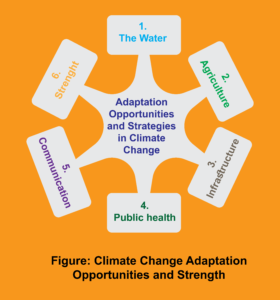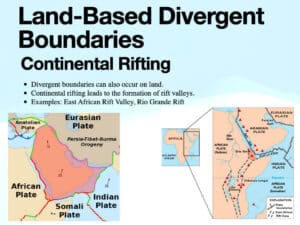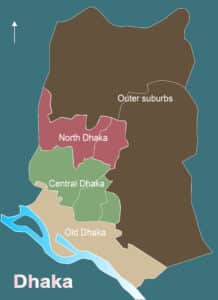Climate change adaptation
Adaptation
Adaptation is adapting to changing conditions. The strategy adopted to overcome the negative impact on human life and livelihood due to climate change is called climate risk adaptation.
Adaptation means the adapting in the adverse condition of an environment and adjustment in new place or environment.
Climate Change Adaptation
Adaptation and adaptation at all levels to address the risks and impacts of climate change has a role and responsibility for all to ensure our national development and our own future.
A sample of development sector adaptation opportunities and strategies is given below:

Adaptation Opportunities and Strategies in Climate Change
The Six opportunities and strategies for climate change opportunities are given below.
1. The Water: Conservation of rainwater harvesting, water harvesting and conservation techniques, water reuse, desalination, water use and irrigation.
2. Agriculture: Planting timing, crop diversification, land-management improvements such as erosion control and prevention through tree planting.
3. Infrastructure: Rehabilitation, development of cyclone resistant settlements and fishing boat structures and construction of sustainable dams or embankments, protection of natural water bodies.
4. Public health: Ensuring health services, emergency health care, diagnosis and prevention of climate-related diseases, clean water and improved sanitation.
5. Communication: Reconstruction and rehabilitation, new planning of roads, construction of suitable infrastructure including drainage systems.
6. Strength: Strengthening distribution systems, efficient use of energy, use of renewable sources, reducing dependence on single energy sources.
Different types of Adaptation
1. Structural Adaptation
2. Non-structural Adaptation
3. Anticipatory Adaptation
4. Reactive Adaptation




